Fatality Assessment and Control Evaluation (FACE) Program |
|
A Hispanic Laborer Operating an Overhead Crane Died When He was Crushed Between Two Steel Frames When the Rigging Failed |
|
|||||||||||||||||
SummaryA 36-year-old Hispanic laborer who was operating an overhead crane in a steel fabrication shop died when he was crushed between two steel frames. The victim was using a chain sling attached to the hook of an overhead crane and configured into a single choker hitch to pick up and turn over the steel frame that was lying horizontally on two saw horses. The hook on the sling did not have a safety latch. The victim was standing between the load and another steel frame that was leaning vertically against the shop platform when the hook disconnected and the vertical frame fell toward the victim, trapping him between the two steel frames. The victim was trained by shop supervisors on the specifics of his job. The riggers in this company were not required to be certified. The CA/FACE investigator determined that, in order to prevent future occurrences, employers, as part of their Injury and Illness Prevention Program (IIPP), should:
IntroductionOn February 25, 2006, at approximately 8:30 p.m., a 36-year-old Hispanic laborer, working in a steel fabrication shop, died when he was crushed between two fabricated steel frames. The CA/FACE investigator learned of this incident on March 16, 2006, through the Legal Office of the Division of Occupational Safety and Health (Cal/OSHA). Contact with the victim’s employer was made on March 30, 2006. On May 18, 2006, the CA/FACE investigator traveled to the facility where the incident occurred and interviewed the company owner and the company’s safety manager. The area where the incident took place was examined and photographed. The company where the victim worked had a written IIPP that was updated annually. The program had general procedures that were not task specific for employees to follow. Safety meetings were held monthly in English and Spanish and were documented. The company had a training program that provided training to employees in all the required areas of safety. Training was also provided to all employees with respect to hazards specific to each employee’s job assignment. The training program consisted of classroom instruction and on-the-job training. Most of the training was done by shop supervisors. The company also had a train-the-trainer program that was given by shop supervisors. Training was measured by supervisor observation of job performance. The victim was specifically trained to do the loading and unloading of the steel products on the trucks. This training, given by the shop supervisors, included the use of the overhead crane, proper use of slings and rigging, and the proper stacking techniques for steel. The victim and another employee were the only two non-supervisory employees at the company with this specific training. The company did not require their riggers to be certified. The victim had been rigging for three years.Back to TopInvestigationThe site of the incident was a steel fabrication shop. On the day of the incident, the victim was assigned to paint two rectangular fabricated steel frames that measured approximately 30' x 4' and weighed approximately 4,000 pounds each. One steel frame was lying horizontally on wooden beams supported by saw horses on each end. The steel frame overhung the wooden beams by more than 10 feet on each side. The other steel frame was standing adjacent to the saw horses. After the victim finished painting one side of the horizontal steel frame, he activated the overhead crane with a pendulum control. He attached a chain sling to the hook on the bottom pulley of the crane (Exhibit 3) and then passed the chain through the steel frame that was lying on the wooden beams. The chain sling was placed midway down the length of one of the main steel frame members. He then took the hook attached to the chain sling and fastened it over the chain sling, creating a single choker hitch (Exhibit 4). The hook did not have a safety latch to prevent the chain sling from slipping out of the throat of the hook. The victim then applied tension to the chain sling by raising the hook of the overhead crane using the pendulum control. The victim raised the piece off the wooden beams to reposition it so that when it was lowered all the way the unpainted side would be face-up. He then lowered the steel frame onto the wood beams on top of the saw horses. This released the tension on the chain because the steel frame remained on edge instead of lowering onto its side. Without any tension on the chain sling and no safety latch on the chain sling hook, the single choker hitch came undone. The wood beams, not strong enough to hold the full weight of the vertical steel frame, broke and the steel frame dropped to the ground. It fell forward toward the victim, crushing him between the two vertical pieces of steel. No one witnessed the incident. Two employees working in the same area heard the crash when the steel frame fell and called for help. They re-attached the chain sling to the steel frame and lifted it off the victim. Other employees dragged him from underneath the steel frame. The paramedics arrived at the incident scene and pronounced the victim dead. Back to TopCause of DeathThe cause of death, according to the death certificate, was blunt injuries. Recommendations/DiscussionRecommendation #1: Ensure employees do not place any part of their bodies into areas where they might become trapped when operating an overhead crane.Discussion: In order to protect themselves and other employees, operators of overhead cranes must be constantly aware of their surroundings, and move their load in a controlled manner. In this particular case, the victim stood in an area where there was no exit should something go wrong. The victim should have avoided the areas directly under and close to the load. Employers can enhance worker compliance with safe work practices through programs of task-specific training, supervision, recognition, and progressive disciplinary measures.
|
||||||||||||||||||
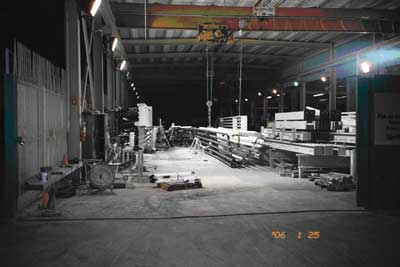 |
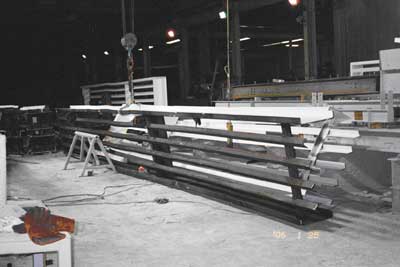 |
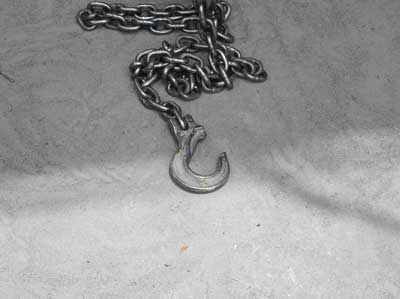 |
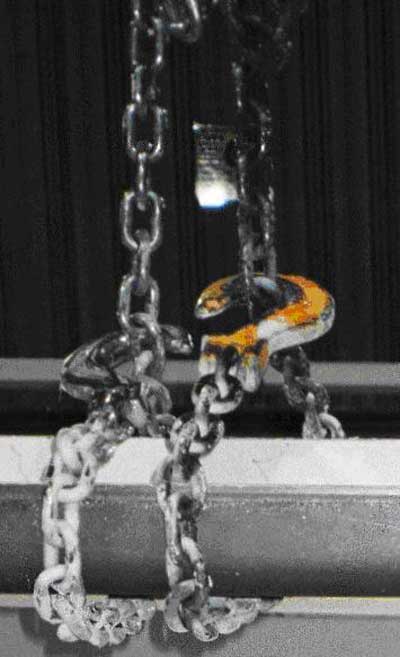 |
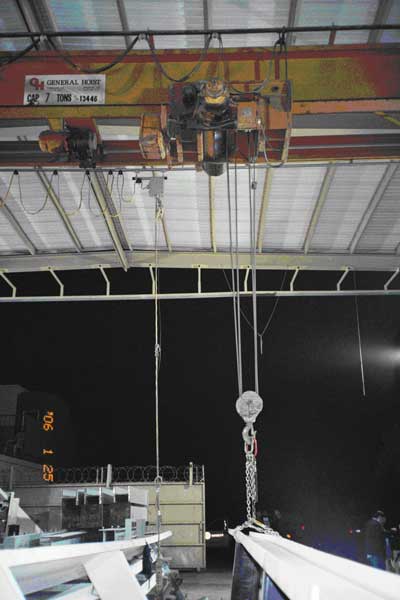 |
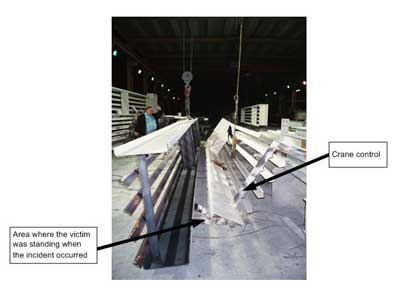 |
 |
Exhibit 7. A picture of a piece of the wooden beam that broke
under the weight of the steel frame.
|
The California Department of Health Services, in cooperation with the Public Health Institute and the National Institute for Occupational Safety and Health (NIOSH), conducts investigations of work-related fatalities. The goal of this program, known as the California Fatality Assessment and Control Evaluation (CA/FACE), is to prevent fatal work injuries in the future. CA/FACE aims to achieve this goal by studying the work environment, the worker, the task the worker was performing, the tools the worker was using, the energy exchange resulting in fatal injury, and the role of management in controlling how these factors interact. NIOSH-funded, state-based FACE programs include: Alaska, California, Iowa, Kentucky, Massachusetts, Michigan, Minnesota, Nebraska, New Jersey, New York, Oklahoma, Oregon, Washington, West Virginia, and Wisconsin.
To contact California State FACE program personnel regarding State-based FACE reports, please use information listed on the Contact Sheet on the NIOSH FACE web site. Please contact In-house FACE program personnel regarding In-house FACE reports and to gain assistance when State-FACE program personnel cannot be reached.